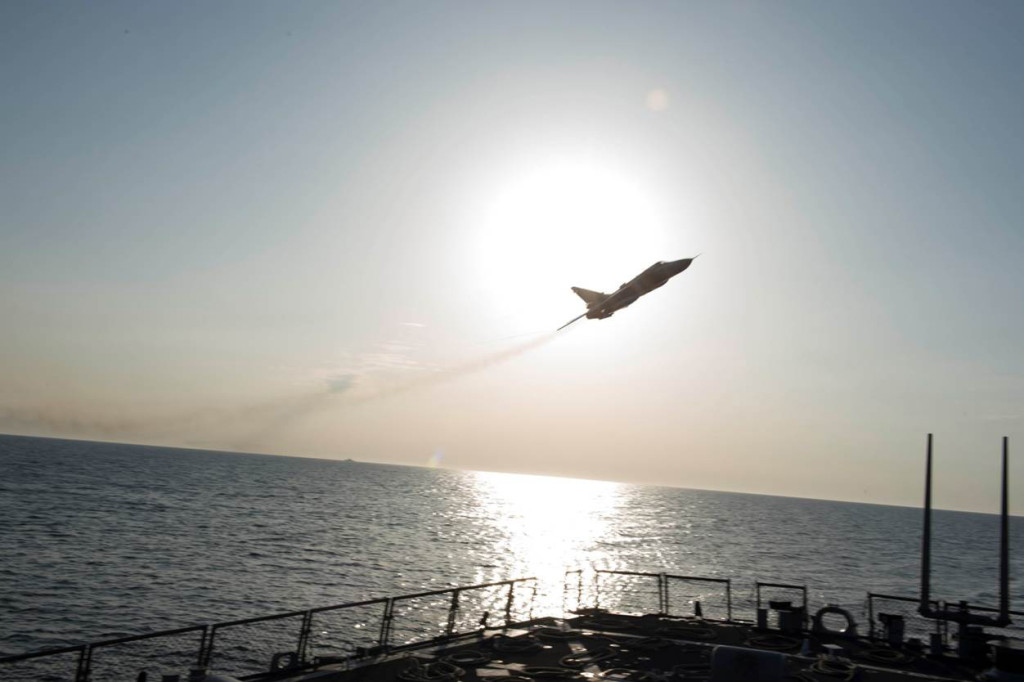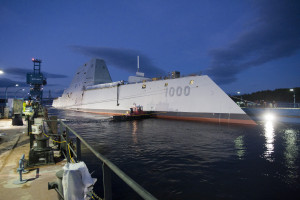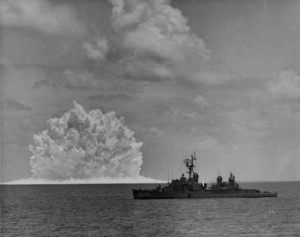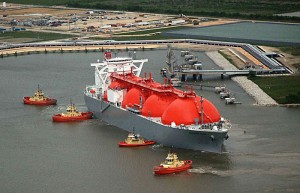And so it goes, we are officially into Cold War II. I never even got my certificate for serving in the first Cold War. Perhaps this morning Vladimir Putin got really hopped up on vodka and Red Bull. There has to be some reason why the Russians would send two unarmed fighter jets for strafing practice against a U.S. Navy destroyer.
Whatever the reason that is what happened Tuesday. At one point the Russian warplanes were flying within 75 feet of the guided missile destroyer U.S.S. Donald Cook. The Military Times reported that the Cook crew members saw the plane within 30 feet of the destroyer.
The ship was practicing deck landing drills in the Baltic Sea with an allied helicopter, reportedly of Russian origin, according to an official Navy news report. Some media said the helicopter was with the Polish military.

“In my judgement these maneuvers in close proximity to Donald Cook are unprofessional and unsafe,” said Adm. Mark Ferguson, Commander, U.S. Naval Forces Europe-Africa.
The Navy issued a statement saying:
“We have deep concerns about the unsafe and unprofessional Russian flight maneuvers. These actions have the potential to unnecessarily escalate tensions between countries, and could result in a miscalculation or accident that could cause serious injury or death.”
Whether the pair of Russian SU-24 jets were 75 or 35 feet away, having an event with an aircraft — regardless of whether they are U.S warplanes or those from another country — when you don’t expect it can scare the hell out of you. I remember an exercise when I served on a destroyer somewhere out in the Pacific. We were steaming not far off our port side by the carrier U.S.S. Kitty Hawk. I was kicked back on the fantail watching the stars when all of a sudden this fighter appeared out of nowhere. It was screaming above our ship probably 50 feet above the stacks and radars. I only saw it for a few seconds, when all of a sudden its lights came on and the jet’s pilot kicked the plane in the ass and it was gone faster than it appeared. My guess was that the plane was a F-14 Tomcat launched from our neighbor, the bird farm that was affectionately known — sometimes — as the “S**tty Kitty.” No matter from where the loud jet launched, the aircraft certainly got my attention.
I likewise recall the first time our ship went to our “home port away from home port,” Subic Bay, Philippines, out of our starboard office porthole, we noticed that some merchant man flying the Soviet Union flag was following us. Our CO decided to make a game of chase. The destroyer was brought about, passed the ship and turned back to follow the U.S.S.R. vessel until we got closer to port. Such interaction with Soviet ships and aircraft back in the day was routine.
This event was a little more menacing than in the Cold War I days. It looks like either Putin wants to play — with fire — or he is looking to start something. That isn’t a good idea either way. The Commanding Officer of the Cook stayed cool, which was good, because shooting up unarmed Russian planes would surely have stirred up a hornet’s nest, no matter that the planes were endangering our ship.
Perhaps that isn’t fair. But what is fair isn’t usually a large consideration when it comes to military forces, especially the biggest ones.
Here is a good quote I found from Navy TImes about why the Cook didn’t shoot:
“You don’t get to kill people just because they’re being annoying,”said retired Capt. Rick Hoffman, who commanded two frigates during his time in the service.



